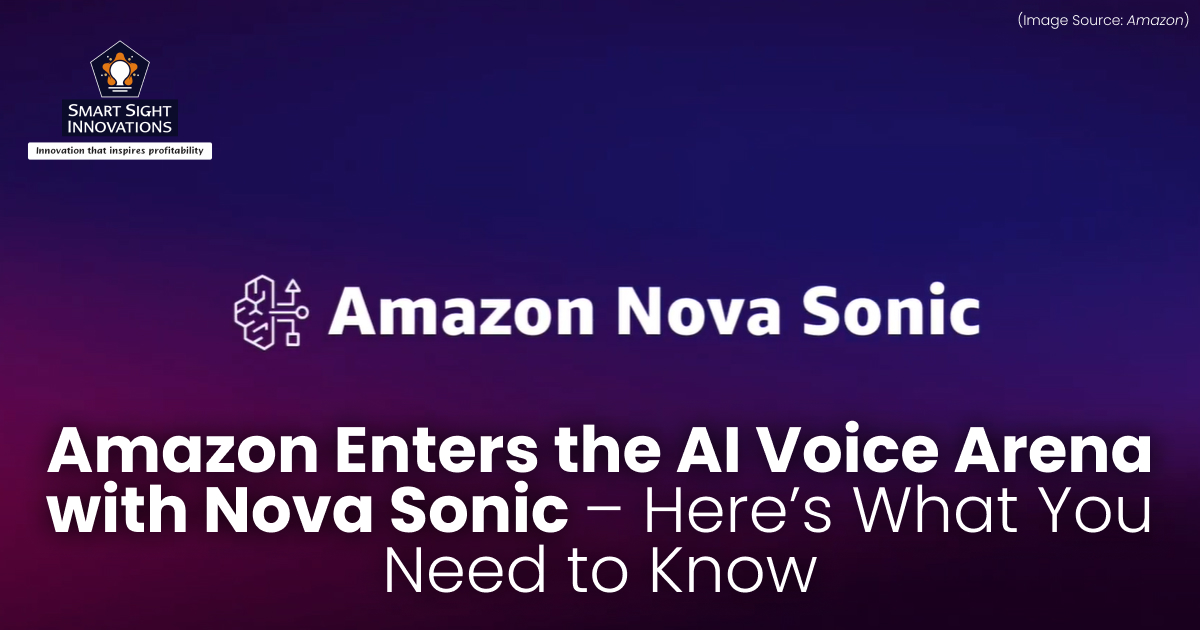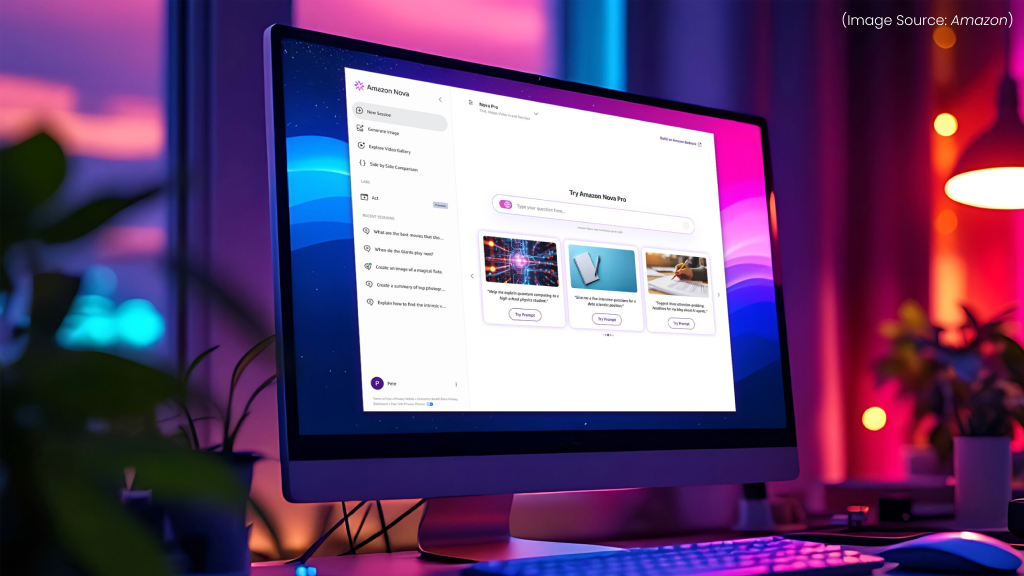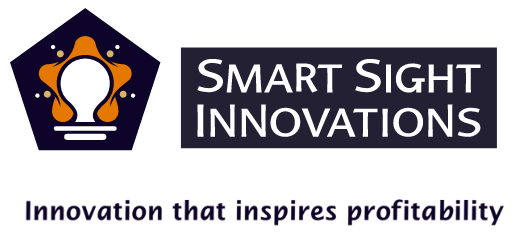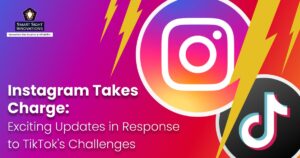
(Image Source: Amazon)
AI-powered voice technology has rapidly evolved from simple command-based systems to dynamic, real-time conversational tools that mimic human speech with remarkable accuracy. At the heart of this transformation is the integration of advanced natural language processing (NLP), machine learning, and speech synthesis, allowing voice assistants to understand context, emotion, and intent in real-time.
Whether it’s controlling smart homes, providing customer support, or assisting in education, AI voice technology is reshaping how we interact with machines. Today’s models can respond fluidly, handle interruptions, and even adjust their tone based on user sentiment.
With tech giants racing to push the boundaries, including Amazon, Google, and OpenAI, voice interfaces are becoming faster, more natural, and more integrated into everyday life. This evolution marks a significant step toward more intuitive, human-like communication between people and technology.
What Is Nova Sonic?

(Image Source: Amazon)
Amazon officially introduced Nova Sonic on April 8, 2025, a next-generation, real-time AI voice assistant designed to deliver natural, fluid conversations at lightning-fast speeds. Unlike traditional voice systems that separate speech recognition, natural language processing, and voice synthesis into different stages, Nova Sonic unifies these processes into a single, end-to-end architecture.
This innovation allows the assistant to respond with human-like cadence, adapt its tone based on emotional cues, and maintain contextual awareness during conversations. Built for developers and enterprises via Amazon Bedrock’s streaming API, Nova Sonic currently supports expressive voices in both American and British English, with more languages on the roadmap.
It’s optimized for various use cases, from smart assistants and customer service agents to interactive learning tools. With latency as low as 1.09 seconds and cost efficiency up to 80% better than competitors, Nova Sonic positions Amazon as a serious contender in the rapidly evolving AI voice landscape.
Key Features of Nova Sonic

(Image Source: Amazon)
Unlike traditional voice AI systems, which separate speech recognition and text-to-speech processes, Nova Sonic integrates both functions into a single unified model, enabling fluid, natural communication. Here are its features:
1. Expressive Voice Responses
One of Nova Sonic’s standout features is its ability to deliver highly expressive speech, making AI interactions feel natural and emotionally aware. Unlike traditional robotic-sounding voice models, Nova Sonic dynamically adjusts tone, pitch, and pace based on context, ensuring engaging conversations.
Whether responding with enthusiasm, empathy, or neutrality, it mirrors human prosody (like rhythm, loudness, stress, etc.), enhancing user experience across applications like customer service, interactive learning, and virtual assistants.
2. Real-Time Streaming with Low Latency
Nova Sonic’s bidirectional streaming API enables instant voice interactions, reducing latency to near-human levels. Unlike traditional AI voice models that introduce slight delays, Nova Sonic processes and responds almost immediately, creating seamless, uninterrupted conversations.
This feature is crucial for customer service automation, real-time voice assistants, and interactive applications, ensuring fluid speech exchanges that feel natural, engaging, and responsive in dynamic environments.
3. Unified Speech Understanding and Generation
Traditional AI voice systems rely on separate pipelines for speech-to-text conversion and text-to-speech synthesis. Nova Sonic eliminates this gap, offering end-to-end speech. This makes interactions faster and more accurate, removing unnatural pauses and ensuring smooth dialogue exchange.
4. State-of-the-Art Accuracy and Quality
Nova Sonic sets a new benchmark for AI voice accuracy, leveraging advanced neural processing to deliver clear, high-fidelity speech with minimal errors. Its accuracy in speech recognition guarantees that responses are extremely comprehensible and pertinent to the context. This makes Nova Sonic ideal for enterprise applications, voice assistants, and real-time interactions, ensuring users receive accurate, natural, and engaging AI-driven conversations.
5. Knowledge Grounding and Function Calling
Nova Sonic enhances AI automation by supporting function calling and agentic workflows, enabling seamless interactions with external systems. Businesses can integrate Nova Sonic into applications that require task execution, real-time data retrieval, and multi-step automation.
This allows voice AI to trigger workflows, book appointments, retrieve enterprise knowledge, and process commands autonomously. By leveraging retrieval-augmented generation (RAG), Nova Sonic ensures responses are accurate and context-aware, making it an ideal tool for enterprise AI assistants and automated customer interactions.
6. Diverse Native Speech Patterns and Voices
Amazon Nova Sonic supports expressive voices in multiple English accents, including American and British English. It offers both masculine-sounding and feminine-sounding voices, allowing users to choose a voice that best fits their needs. The model dynamically adjusts the speaking style based on the input speech, making interactions feel more natural.
How Nova Sonic Compares to Other Voice AIs

(Image Source: Amazon)
Amazon’s Nova Sonic enters a competitive landscape dominated by AI voice models from companies like OpenAI, Google, and Apple. Each of these models aims to create human-like, expressive voice interactions, but Nova Sonic brings several unique capabilities to the table. Here’s how Nova Sonic Compares to ChatGPT Voice, Google Assistant, and Apple’s Siri:
1. Speed and Latency
-
Nova Sonic
Responds in as little as 1.09 seconds, thanks to its unified, end-to-end speech-to-speech model.
-
ChatGPT Voice
Very fast (also under 1.5 seconds), but often cloud-dependent and variable based on the connection.
-
Google Assistant
Quick for basic commands, but struggles with complex queries or contextual memory.
-
Apple’s Siri
Reliable in simple tasks but significantly slower and more rigid in handling follow-up questions.
Verdict
Nova Sonic and ChatGPT Voice lead in real-time interaction; Nova Sonic may edge ahead with more consistent low-latency performance.
2. Conversational Intelligence
-
Nova Sonic
Supports multi-turn dialogue, emotional tone matching, and context-aware continuity.
-
ChatGPT Voice
Highly conversational, can remember context across turns, and mimic human inflection well.
-
Google Assistant
Handles basic context but often resets between questions.
-
Apple’s Siri
Contextual understanding is still limited; often requires rephrasing.
Verdict
ChatGPT Voice is strongest in depth, but Nova Sonic closes the gap quickly with emotion-aware responses and contextual awareness.
3. Voice Naturalness and Emotional Expression
-
Nova Sonic
Delivers expressive, human-like voices that adapt based on tone and mood.
-
ChatGPT Voice
Very natural and emotive, using OpenAI’s multi-speaker models.
-
Google Assistant
Decent expressiveness but lacks subtle emotional cues.
-
Apple’s Siri
Polished but mostly neutral and robotic in tone.
Verdict
Nova Sonic and ChatGPT Voice are nearly neck and neck, with both offering standout realism and expressiveness.
4. Multilingual and Accent Support
-
Nova Sonic
Currently supports American and British English, with more planned.
-
ChatGPT Voice
English-focused, but OpenAI supports many languages in text.
-
Google Assistant
Supports over 40 languages and regional dialects.
-
Apple’s Siri
Also offers wide multilingual support, including on-device translation.
Verdict
Google and Siri lead here, for now. Nova Sonic has catching up to do in language diversity.
5. Integration and Ecosystem
-
Nova Sonic
Integrated with Amazon Bedrock for developers and Echo/Alexa for consumers.
-
ChatGPT Voice
Embedded in the ChatGPT app, API access is limited.
-
Google Assistant
Deeply embedded in Android, Pixel, Google Home devices.
-
Apple’s Siri
Native to all Apple devices, with system-wide access.
Verdict
Google and Apple dominate in ecosystem reach, but Amazon’s Bedrock opens strong developer potential for Nova Sonic.
6. Developer Access and Use Cases
-
Nova Sonic
Offers bidirectional streaming APIs, supports function calling, RAG, and custom app integration.
-
ChatGPT Voice
Developer access is limited; OpenAI focuses more on consumer-facing tools.
-
Google Assistant
Developer tools exist but are restrictive compared to Nova Sonic.
-
Apple’s Siri
Very limited customization or extensibility for third-party developers.
Verdict
Nova Sonic clearly targets developers, making it more flexible and extensible than rivals.
While ChatGPT Voice leads in conversational depth, Nova Sonic is a serious contender with its low-latency processing, emotion detection, and developer flexibility. Google Assistant and Siri, though deeply integrated into their ecosystems, are beginning to show their age in comparison. Nova Sonic’s arrival could be the disruption the voice assistant market has been waiting for.














